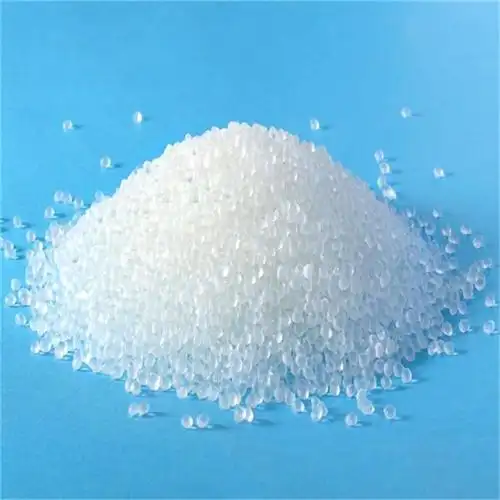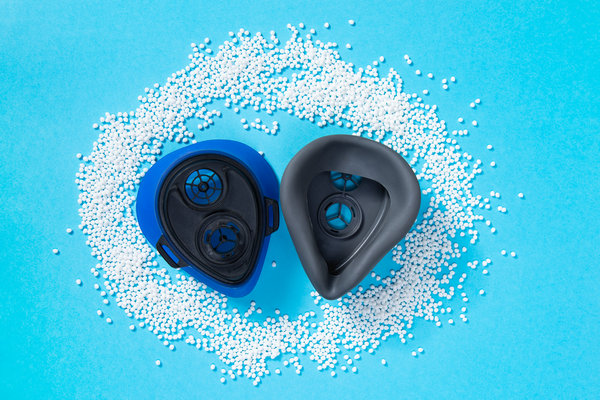As someone who’s spent years navigating the ins and outs of thermoplastic elastomers (TPEs), I’ve seen how their unique stretch-and-snap-back properties can make or break a product. One key property that often comes up in projects is elongation at break—the measure of how far a TPE can stretch before it snaps. Whether you’re designing flexible medical tubing, durable shoe soles, or soft-touch grips, a higher elongation at break can mean better performance and durability. But boosting this property isn’t always straightforward. In this article, I’ll share practical, field-tested strategies to increase TPE elongation at break, drawing from my own experiences and industry insights to help you get the stretch you need.

What Is Elongation at Break, and Why Does It Matter?
Elongation at break, expressed as a percentage, tells you how much a TPE can stretch relative to its original length before it fails. A TPE with 500% elongation at break, for instance, can stretch five times its length before breaking. This property is critical for applications where flexibility and resilience are non-negotiable, like wearable devices or elastic seals. In my early days working on TPEs, I was tasked with improving a material for a stretchy wristband that kept snapping under strain. The culprit? Low elongation at break. Since then, I’ve learned that tweaking this property involves a mix of material science, processing know-how, and a bit of creativity. Let’s dive into the key ways to boost it.
Strategies to Boost TPE Elongation at Break
1. Optimize the TPE Formulation
The foundation of a TPE’s elongation lies in its molecular structure, which is a balance of hard and soft segments. The soft segments, typically amorphous chains, give TPEs their stretchy nature, while hard segments provide structure. Here’s how to tweak the formulation:
Increase soft-segment content: A higher proportion of soft segments, like polyether or polybutadiene in SEBS or TPU, boosts elongation. In a project for flexible packaging, we worked with a supplier to increase the soft-segment content in a SEBS-based TPE, pushing elongation from 400% to 650%.
Use plasticizers: Adding plasticizers like mineral oil or phthalate-free alternatives softens the TPE, enhancing stretchability. A 5-10% addition can increase elongation significantly, but too much can reduce tensile strength.
Select high-molecular-weight polymers: TPEs with longer polymer chains tend to have higher elongation because they can uncoil more before breaking. Ask your supplier for high-molecular-weight grades tailored for flexibility.
One lesson from a medical tubing project sticks with me: we initially used a TPE with too much plasticizer, which made it stretchy but weak. Dialing back to 7% plasticizer and pairing it with a high-molecular-weight SEBS base gave us an elongation of 700% without sacrificing durability. Always balance elongation with other properties like strength.

2. Choose the Right TPE Type
Different TPE types have varying baseline elongation properties. Here’s a quick comparison to guide your selection:
|
TPE Type |
Typical Elongation at Break |
Key Features |
Best Applications |
|---|---|---|---|
|
SEBS |
500-800% |
Highly stretchy, good recovery |
Medical tubing, grips |
|
TPU |
400-600% |
Durable, abrasion-resistant |
Shoe soles, cables |
|
TPO |
200-400% |
Stiffer, less stretchy |
Automotive parts |
|
TPV |
300-500% |
Chemically resistant, durable |
Seals, gaskets |
For maximum elongation, SEBS is often the go-to choice due to its high stretchability. In a project for a yoga mat, we switched from a TPO (with 300% elongation) to an SEBS-based TPE, achieving 600% elongation and a softer feel. If your application demands extreme stretch, start with SEBS or a TPU with a high soft-segment ratio.
3. Incorporate Polymer Blends
Blending TPEs with compatible polymers can enhance elongation while maintaining other properties. Common blends include:
Low-density polyethylene (LDPE): Adds flexibility and boosts elongation for applications like films or soft grips. A 10% LDPE blend in a SEBS TPE increased elongation by 150% in one of our packaging projects.
Ethylene-vinyl acetate (EVA): Enhances softness and stretch, ideal for consumer goods. We used a 5% EVA blend for a TPE toy, pushing elongation to 550% without compromising safety.
Avoid stiff polymers: Blending with polypropylene (PP) or high-density polyethylene (HDPE) can reduce elongation, so use these sparingly if stretch is your goal.
Blending requires precision, so work with a compounding expert. I once saw a team try to “eyeball” a blend, resulting in inconsistent elongation across batches. Lab-scale testing is your friend here.
4. Fine-Tune Processing Conditions
How you process TPEs can significantly impact elongation at break. Injection molding, extrusion, or blow molding all have variables that affect molecular alignment and stress distribution:
Melt temperature: Higher temperatures (e.g., 190-220°C for SEBS) improve flow and reduce internal stresses, enhancing elongation. But overheating can degrade chains, so stay within supplier guidelines.
Cooling rate: Slow cooling allows polymer chains to relax, improving stretchability. Rapid cooling can lock in stresses, reducing elongation. In a TPE seal project, extending cooling time by 5 seconds boosted elongation by 100%.
Shear rate: High shear during injection or extrusion can align chains too tightly, lowering elongation. Use lower screw speeds or gentler screw designs for stretchy TPEs.
I recall a TPE cable project where low elongation (350%) caused failures during flex testing. Raising the melt temperature by 10°C and slowing the cooling rate pushed elongation to 500%, solving the issue. Always monitor processing parameters closely—small changes can make a big difference.
5. Minimize Fillers and Reinforcements
Fillers like calcium carbonate or talc can reduce elongation by stiffening the material. If elongation is your priority:
Limit filler content: Keep fillers below 10% by weight. In a project for TPE tubing, reducing calcium carbonate from 15% to 5% increased elongation from 450% to 600%.
Avoid reinforcing fibers: Glass or carbon fibers, while great for strength, drastically cut elongation. If strength is needed, opt for a high-molecular-weight TPE instead.
Test filler impact: Even small amounts can affect stretch. Always run tensile tests (per ASTM D412) to quantify the effect.
One mistake I made early on was using a 20% talc-filled TPE for a stretchy grip, thinking it would cut costs. The elongation dropped to 200%, and the grip felt brittle. Switching to a low-filler SEBS restored the stretch we needed.

Practical Tips for Success
From years of working with TPEs, here are some hard-earned tips to maximize elongation at break:
Partner with suppliers: Share your elongation goals (e.g., 600% for a specific application) with your TPE supplier. They can recommend tailored grades or additives.
Test rigorously: Use standards like ASTM D412 to measure elongation at break and tensile properties. Supplement with real-world tests, like cyclic stretching, to mimic application conditions.
Start small: Before scaling up, test formulations and processing conditions on a lab scale. This saved me when a client’s TPE blend failed under high strain—small trials caught it early.
Consider environmental factors: TPEs may lose elongation in extreme heat, cold, or UV exposure. Test under your product’s operating conditions to ensure performance.
Balancing Elongation with Other Properties
Boosting elongation often comes with trade-offs. For instance, increasing soft-segment content or plasticizers can reduce tensile strength or heat resistance. In a project for a TPE sports band, we achieved 700% elongation but noticed the material softened too much at 40°C. Adding a UV stabilizer and slightly reducing plasticizer content (to 6%) maintained 600% elongation while improving durability. Always weigh elongation against other requirements like strength, hardness, or environmental resistance.
Common Challenges and Solutions
Here are some hurdles I’ve faced when boosting TPE elongation, along with fixes:
Inconsistent elongation: Caused by uneven mixing or processing. Ensure thorough compounding and consistent melt temperatures. In one case, recalibrating the extruder fixed batch-to-batch variations.
Reduced strength: High elongation can weaken the material. Use high-molecular-weight TPEs or minimal plasticizers to maintain a balance. We solved this for a TPE hose by switching to a premium SEBS grade.
Cost concerns: High-elongation TPEs can be pricey. Work with suppliers to find cost-effective grades or blends that meet your elongation targets without breaking the bank.

Real-World Applications
To make this concrete, here are examples where we improved TPE elongation:
Medical tubing: Needed 600% elongation for kink resistance. Used a SEBS TPE with 8% plasticizer and optimized extrusion cooling, achieving 650% elongation.
Wearable straps: A fitness tracker strap required 500% elongation. Switched to a high-molecular-weight SEBS and added 5% LDPE, hitting 550% with good durability.
Elastic films: A packaging film needed 700% elongation. A SEBS-EVA blend with slow cooling during extrusion delivered 720% elongation and tear resistance.
Closing Thoughts
Increasing the elongation at break of TPEs is a journey of balancing material chemistry, processing precision, and application needs. From my time in the field, I’ve learned that success comes from methodical testing, close collaboration with suppliers, and a willingness to iterate. Whether you’re crafting a stretchy consumer product or a resilient industrial component, the strategies I’ve outlined—optimizing formulations, choosing the right TPE type, and fine-tuning processing—can help you achieve the elongation you need. Don’t be afraid to experiment, but always back it up with data and real-world testing. A stretchier TPE can elevate your product from good to great.

Related Questions and Answers
Q: Can I increase elongation without changing the TPE type?
A: Yes, you can adjust the soft-segment content, add plasticizers, or optimize processing (like slower cooling) to boost elongation within the same TPE type. Work with your supplier to fine-tune the formulation.
Q: How do I know if my TPE’s elongation is sufficient?
A: Test it under real-world conditions using ASTM D412 for elongation at break. Compare results to your application’s requirements (e.g., 500% for a stretchy strap). Cyclic testing can also reveal performance under repeated strain.
Q: Are there eco-friendly TPEs with high elongation?
A: Bio-based TPEs, like those derived from renewable sources, can achieve high elongation (500-700%) with the right formulation. Look for phthalate-free plasticizers and work with suppliers to ensure sustainability.
Q: What if my TPE becomes too soft after increasing elongation?
A: If the material loses strength, reduce plasticizer content slightly or use a high-molecular-weight TPE grade. Blending with a small amount of LDPE can also help balance softness and durability.





